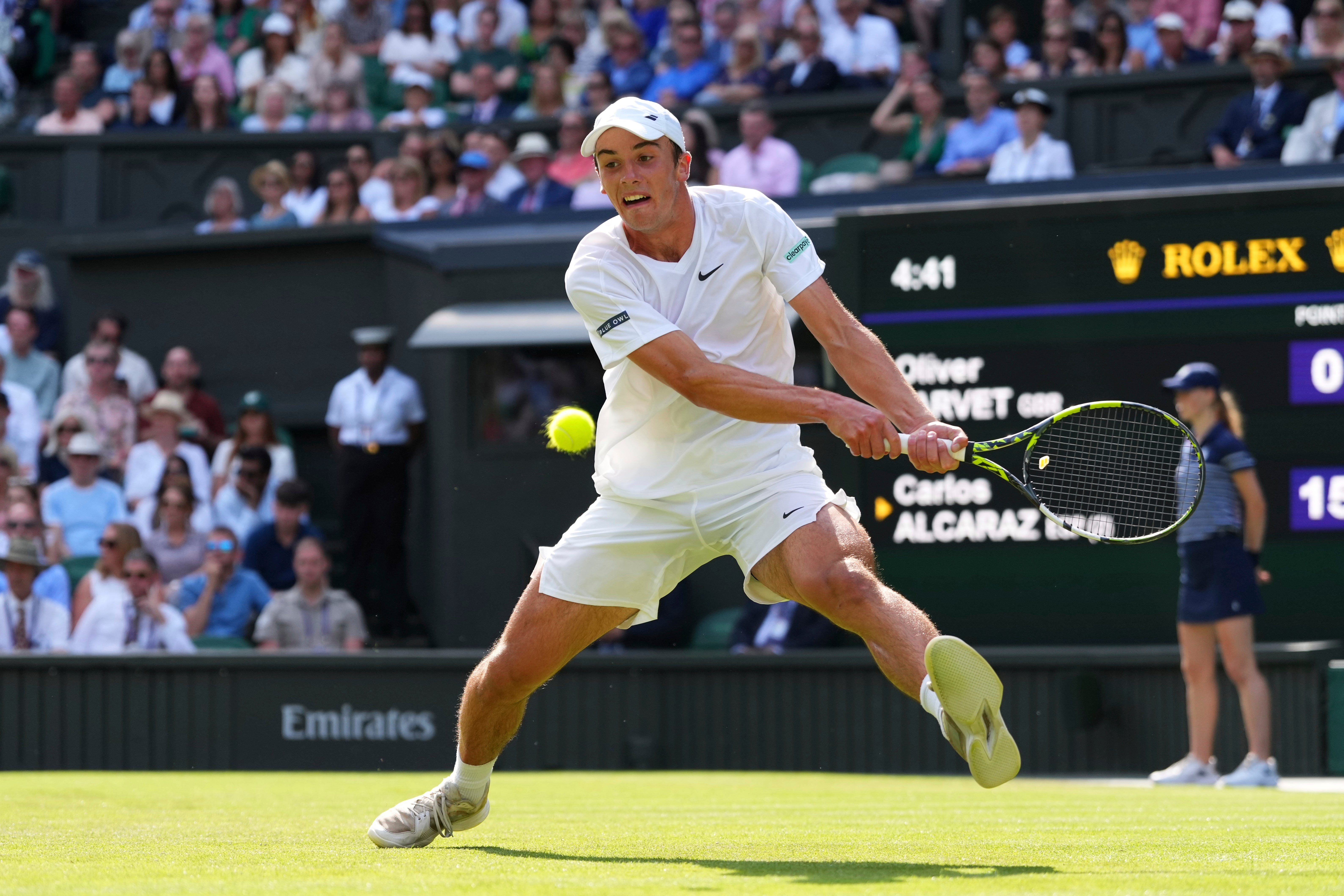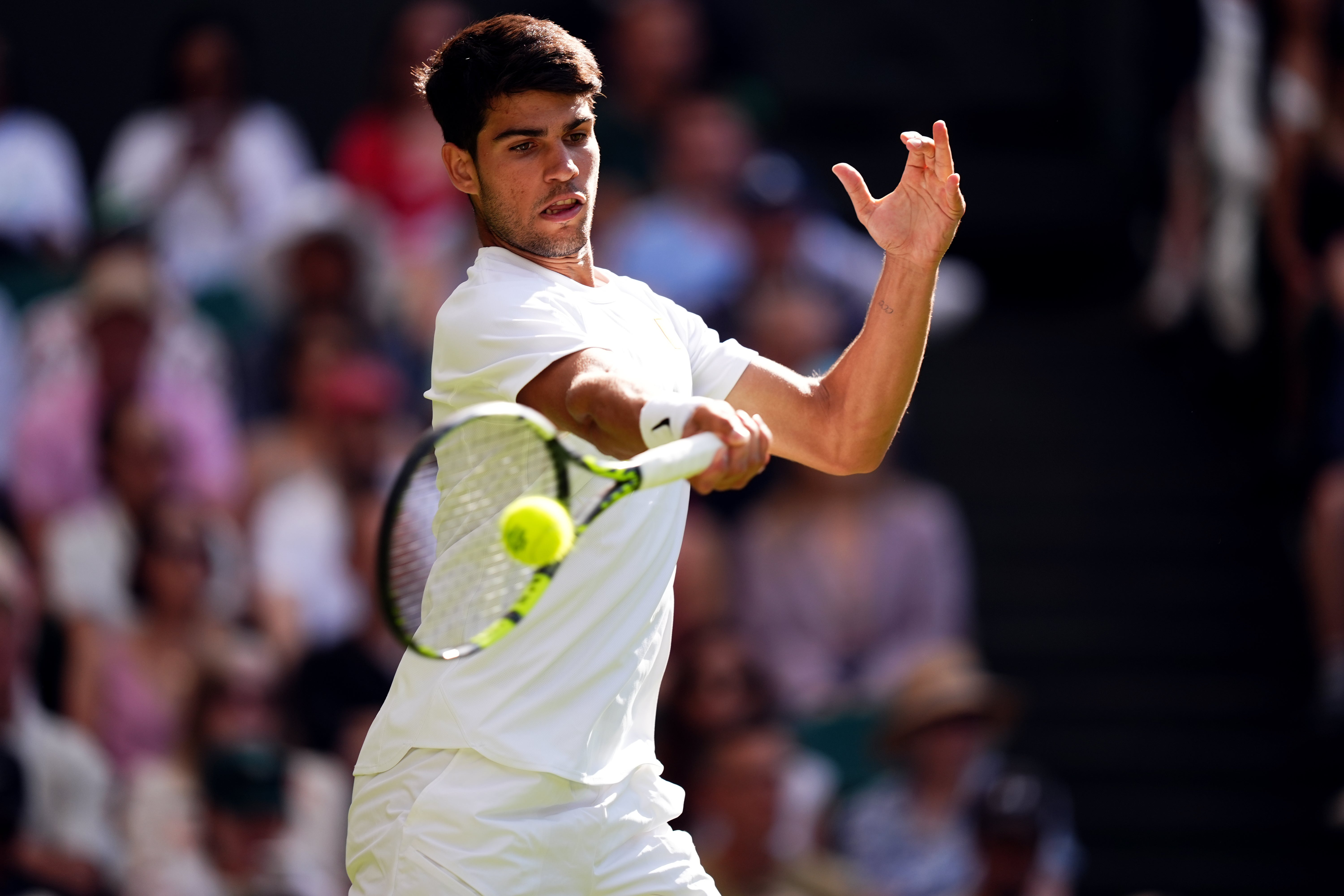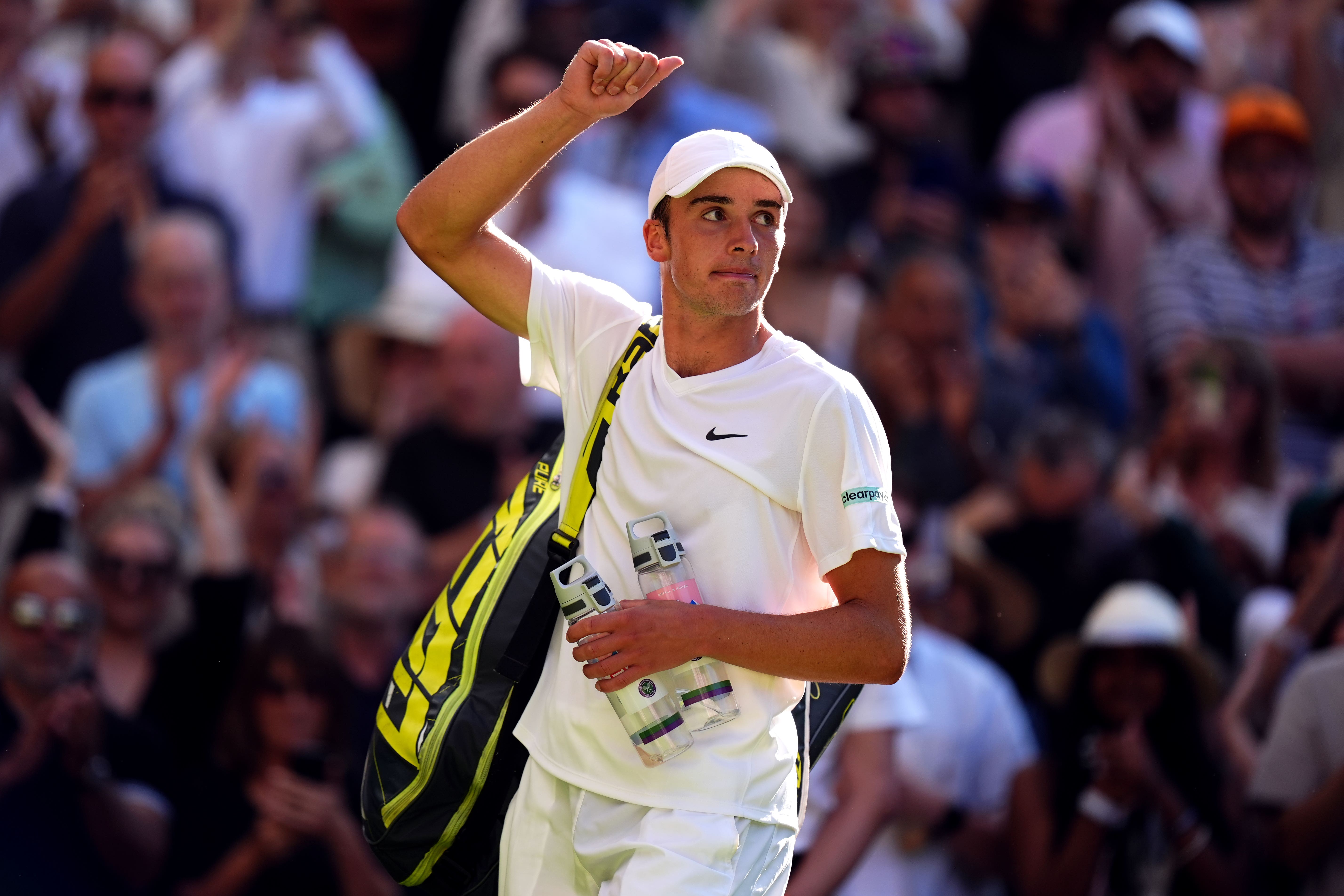
Play the ball, not the player, said Ollie Tarvet before the biggest match of his life against reigning Wimbledon champion Carlos Alcaraz. The flaw was that the ball came at the world No 733 faster than ever before, with more topspin revs and at a more devilish angle. It was still the same sport as his wins on the US college scene in front of a few dozen spectators. And yet this was almost another game entirely, like how laying cheese on bread under the grill is, only technically, cooking.
Alcaraz’s 6-1, 6-4, 6-4 victory came in two parts. The first set felt like what it might look like if a regular muggle played tennis against the world No 2 on Centre Court. Never before had Tarvet faced a player who combines such extreme levels of speed and spin with unerring accuracy, such that Alcaraz’s groundstrokes rushed over the net before dipping into far-flung corners of the court, hitting 38 winners in all.
“I’ve played against really good players before but not quite the level of Alcaraz,” Tarvet said. “As soon as I dropped to 95 per cent focus, I lost the game. When I missed the first serve, the guy’s up on the baseline [for the second serve] and it’s intimidating, he’s ready to make you run.”
Alcaraz generates around 3,200 RPM on his forehand compared to an average of 2,700 RPM on the ATP Tour, he averages 78mph from the baseline compared to a Tour average of 75mph, and his shot quality is rated as 8.62 by the ATP’s data bods, above Djokovic (8.54) and behind only Jannik Sinner (8.80). The result was that routine groundstrokes stunned the Centre Court crowd, like a moment midway through the first set when he cracked a cross-court missile which brought audible gasps.
“He’s so effortless,” Tarvet said. “It doesn’t feel like he’s hitting the ball that hard but it comes through so quick and so heavy.”


Alcaraz produced moments of magic, like at the start of the second set when he whipped the ball around the net post and on to the line – Tarvet’s challenge gave the crowd the chance to appreciate Alcaraz’s accuracy on the big screen.
Yet the latter two sets of his victory were different. Tarvet’s eyes began to calibrate, adjusting to the flight of the ball in the same way players adjust from clay to grass. He broke serve in the second set, and again in the third as if to prove it was no fluke. How many Centre Court debutants wilt in the spotlight against great champions? The 21-year-old blossomed in the afternoon sunshine, fist-pumping his way around the court, each point a little confirmation of what he already suspected: that he could cope out here.
It proved Tarvet is far better than his lowly world ranking suggests. He has deliberately delayed his ascent to the professional ranks by taking the college route, enrolling at the University of San Diego on a communications and marketing course in order to mature in the nurturing, high-tech US system which shaped fellow Britons Cameron Norrie and Jacob Fearnley. Along the way he has won college tournaments and ITF Tour titles, the third tier of men’s tennis, honing his game in a sophisticated training environment against capable opposition.
It is a route not commonly trodden by elite European players, who tend to get out on the professional circuit far quicker. But it offers access to elite coaching and facilities, and a place to grow physically and mentally without the financial pressures that come with travelling around the pro tour, even if the college system’s draconian rules mean Tarvet can scoop only £10,000 of his £99,000 winnings for reaching the second round.
US college sport is a popular choice with European golfers, helping to mould Jon Rahm and Ludvig Aberg, and it is increasingly showing itself as road to professional tennis. Norrie says he got “stronger, smarter, and learned how to compete at a high level consistently” at Texas Christian University, while coaches extol the virtues of their programmes. “A lot of European kids are technically sound but not physically ready at 18,” said former Georgia Tech & Florida coach Bryan Shelton. “College gives them a runway without sacrificing competition.”

On only his second pro tour match, Tarvet rose to the occasion, playing with his chest out and chin up, roaring at hard-fought winners and vital holds of serve. He started to get a foothold late in the first set and then broke the Alcaraz serve to rouse the crowd, even if the threat of an upset was snuffed out a couple of minutes later when the Spaniard summoned Deity Mode to immediately break back.
The third set was tighter still and afterwards Alcaraz embraced Tarvet at the net, congratulating his opponent and telling him to keep working hard. “The level we can see in college is pretty high,” Alcaraz said, pointing out the record number, 26, of US college students and graduates playing at Wimbledon this year. “It’s his second match on the tour and I just loved his game to be honest.”
So perhaps it is no surprise that Tarvet will not be dropping out of college just yet, even if a career in the professional game is calling. “Nothing’s changed based on the last 10 days. I still want to go back to University of San Diego, it’s been incredible. I think I have a few things, a few creases in my game I need to iron out. I think if you give me a year, especially with the coaches that we have at USD, I think I’ll be in a much better spot.”







